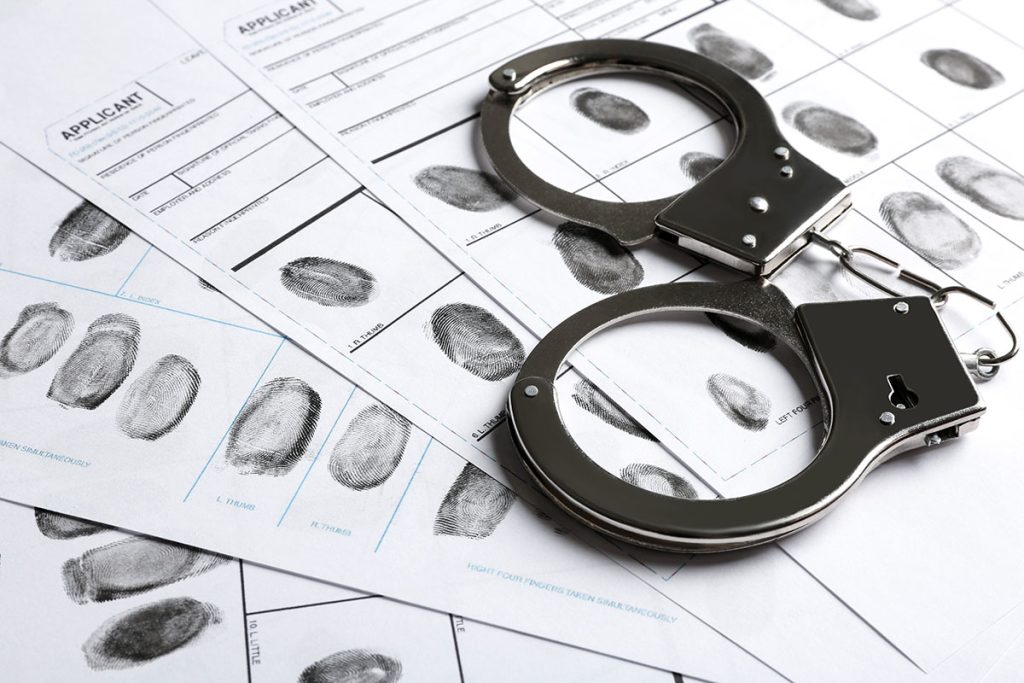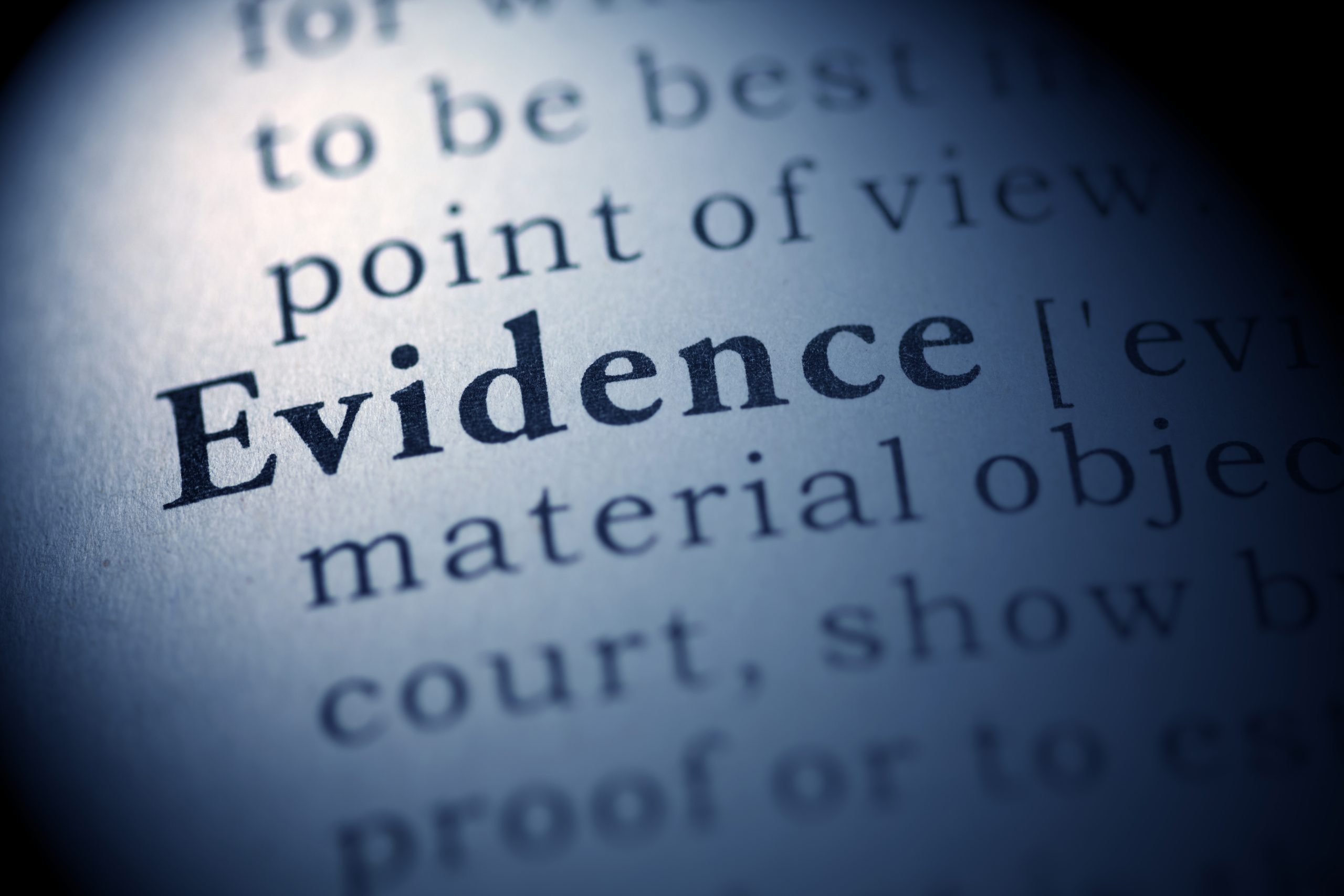There are two basic categories of evidence (1) direct evidence (2) circumstantial evidence. The former relies on witness perceptions and the latter on circumstantial evidence such as DNA. Depending on the laws in your country, you may break down these two categories into at least seven different types of evidence as explained below.
Quick take: How many types of evidence are there?
- The two main types of evidence are direct and indirect/circumstantial evidence.
- exculpatory evidence refers to evidence that you may use to exonerate yourself such as an alibi, or witness testimony.
- It is unlawful for prosecutors to withhold evidence that may exonerate you or reduce your sentence.
- Tampering with evidence or improperly obtained evidence may lead to case dismissal or a new trial.
- Tampering with evidence is a felony or misdemeanor.
- If there is a dispute over the authenticity of evidence, only the original evidence is admissible.
- Chain of Custody of Evidence (Documentation) ensures that evidence remains the same from collection to admission.
What are the general types of evidence in the US and Canada?
Direct and circumstantial evidence are the two main types of evidence. As mentioned, direct evidence is based on the sense or perception of the witness, and circumstantial evidence is not based on perceptions.
What is direct evidence?

In civil or criminal proceedings, direct evidence refers to valid forms of proof. For instance, if you witness someone committing a felony, your testimony is direct evidence. Videos of the incident or eyewitness testimonies are other examples of direct evidence.
Examples of direct evidence:
- Ballistics evidence from a gun used in a crime
- Security footage or audio recordings of the person committing/admitting to the crime
- Fingerprints at the crime scene
- Eyewitness testimony
- Direct digital evidence
What is circumstantial evidence?
State and federal laws allow prosecutors to convict a defendant based on circumstantial evidence alone in the US. As the name suggests, circumstantial evidence is evidence not drawn from direct observation of a crime. This type of evidence suggests that a fact is true but not directly prove it.
There are many types of circumstantial evidence, including fingerprints found at the scene, harassing emails or internet history, audio recordings, and so on.
Examples of circumstantial evidence:
- Patterns such as past hostility or habits
- Opportunity
- The means to commit a crime
- Relevant skills
- Actions after the crime (flight, lying to police, destroying evidence)
- Knowledge of the crime
- Past history of violence
What does admissible evidence mean?
Admissible evidence refers to evidence that you present to a judge or jury for them to decide the case. Note that in the US and Canada. It is up to the judge to determine the admissibility of evidence based on value, authenticity, and relevance. Because of that, for evidence to be admissible in court, it must be factual, and it must be related to the case.
That raises the question:
What are the standards of proof?
Proof differs from evidence in that it is a conclusion that specific facts are true or false. On the other hand, evidence is data that assists in decision-making. “Standard of proof” refers to the degree to which an individual must prove his case. There are three primary standards of proof:
- Clear and convincing evidence. Refers to evidence that is likely to be true. For example, if a security camera captures you committing a crime, the prosecution has clear and convincing evidence.
- “Preponderance of the evidence.” Used in civil proceedings, Preponderance of Evidence is an evidentiary standard that requires the party with the burden to convince the court that there is at least a 50% chance that the claims are true. An example is when you take civil action after a car accident. In some states, if you are 51% responsible for the accident, then you must pay the victim.
- Proof beyond a reasonable doubt. This is a legal standard that you must meet to convince the court that the accused is guilty.
What is inadmissible evidence?
Inadmissible evidence refers to evidence that prosecutors cannot use to prove a claim. Some examples include hearsay or irrelevant witness statements.
How is evidence introduced during the trial?
Apart from witness testimony, you must take the following steps to introduce evidence:
- Prepare the evidence and mark it as “exhibit.” You may collect or discover evidence via dispositions, document production, request to admit, interactions, and physical/mental examinations. To force the other party to produce evidence, you may use a subpoena to testify, submit a discovery request, or subpoena to produce documents.
- Authentication. If there is a witness, the witness must view and authenticate the evidence.
- Establish a chain of custody to ensure that the evidence was not contaminated between the time of the incident and trial.
The purpose of establishing “chain of custody of evidence” is to verify if every transfer was documented from the moment of evidence collection. In other words, the evidence collected must be the same evidence when presented in court. If someone tampered with evidence, then it may not be admissible to court.
This may make or break your case, so we recommend that you read more on the spoliation of evidence here.
What are the seven forms of evidence?
You may break down circumstantial and direct evidence into the following forms.
- Physical evidence. Physical evidence may include the murder weapon, fingerprint, blood, or other physical items relevant to the case.
- Documentary evidence refers to writings, photographs, and so on.
- Demonstrative evidence refers to visual aids such as sketches and charts.
- Direct evidence refers to evidence that links the accused directly to a crime -such as eyewitness accounts, surveillance footage, or recorded confession.
- Statistical evidence. Refers to numeric data that may prove guilt or innocence.
- Physical evidence refers to tangible objects, including fibers, fingerprints, and biological material.
- Digital evidence refers to evidence stored on electronic devices, including computers or mobile phones.
Other types of evidence that may or may not be admissible include:
- Hearsay
- Corroborating evidence (authenticates or confirms other evidence)
- Expert witness testimony.
- Trace evidence such as hair, pollen, paint, dirt, and other trace elements.
- Forensic evidence such as DNA.
- Character evidence/impression/habit evidence.
What is exculpatory evidence?
If you are accused of a crime, Exculpatory Evidence refers to evidence that may exonerate you.
Under the Brady Rule (Brady V. Maryland 373 U.S.83), prosecutors must disclose materially exculpatory evidence that the state may have. For instance, Delaware’s superior court rule section 16c, states that, quote:
“If before or during the trial, a party discovers additional evidence or material previously requested or ordered, which is subject to discovery or inspection under this rule, such party shall promptly notify the other party or that other party’s attorney or the court of the existence of the additional evidence or material.”
What happens if the prosecution does not disclose exculpatory evidence?
Under the Brady rule, if the prosecution fails to fulfill its obligation to notify the other party of existing evidence, depending on state law, prejudice has ensued.
Brady Rule. What to remember:
- Prosecutors must share evidence that may prove the innocence of the defendant.
- Prosecutors must share evidence that may serve to reduce the sentence of the accused.
- “Brady cops” refers to dishonest police officers who falsify or tamper with evidence.
Note. Tampering with evidence is a misdemeanor or felony, depending on state law. Also, to prove a Brady violation, you must demonstrate the following elements:
- The evidence that the prosecutor failed to disclose is or was favorable to the defendant.
- The prosecutor or officer intentionally or willfully withheld the evidence.
- The accused suffered prejudice in his defense because of the prosecution’s failure.
What happens if someone tampers with evidence?
Tampering with evidence is a broad concept that refers to actions aimed at concealing a crime. To prove it, prosecutors must show that the accused willfully or purposefully interfered with evidence, the accused knew or should have known that the action would have a specific result, the evidence was relevant to the case, and that the individual was aware of an existing investigation.
If there is evidence to prove evidence tampering, the court may quote. Florida Title VII chapter 90. 104. Rulings on evidence:
“A court may predicate error, set aside or reverse a judgment, or grant a new trial on the basis of admitted or excluded evidence when a substantial right of the party is adversely affected and: (a) When the ruling is one admitting evidence, a timely objection or motion to strike appears on the record, stating the specific ground of objection if the specific ground was not apparent from the context; or (b) When the ruling is one excluding evidence, the substance of the evidence was made known to the court by offer of proof or was apparent from the context within which the questions were asked.”
In other words, tampering with evidence or obstruction of justice in some states may result in a case dismissal or a new trial.
Grounds that may lead to criminal case dismissal
- Lack of sufficient evidence to show probable cause.
- Lost or tampered evidence.
- Missing witnesses.
- Failure of the arresting officer -to read/give you your Miranda rights.
- Improperly obtained evidence.
What is it called when evidence is tampered with?
In the US, the term Spoliation of Evidence refers to the intentional, negligent, or reckless destruction of evidence or altering, fabrication, hiding, or withholding of evidence. To prove that someone tampered with evidence, prosecutors must prove beyond a reasonable doubt that the act was deliberate. Meaning depending on state law, you may not face charges for accidental tampering.
What is the penalty for tampering with evidence?
The facts presented and state law determine if the crime is a felony or misdemeanor. For misdemeanor offenses, the penalty is a maximum of one year in jail.
For professionals, A conviction may mean suspension or revocation of your professional license.
On the federal level – Felony tampering is punishable by up to twenty years in prison and a fine.
What is the difference between evidence and fact?
As mentioned, evidence refers to data that indicates if a claim or belief is true or false. On the other hand, fact refers to provable truths. You can destroy or tamper with evidence, but you cannot destroy fact.
